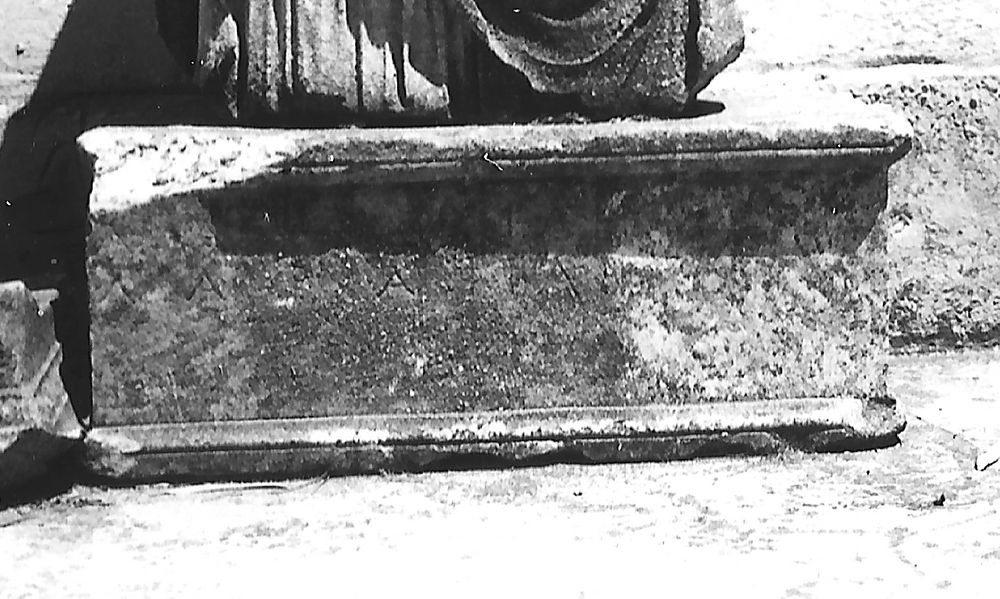EpiDoc XML:
IGCyr1054002
Trismegistos ID:
738578
Source description
Support: White marble base, with plain mouldings on top and below, hammered at right (w: 0.68 × h: 0.275 × d: 0.315).
Layout: Inscribed twice on one line on the face between the mouldings (w: 0.65 × h: 0.185 × d: 0.27).
Letters: 0.03; no serifs; phi with ovale loop.
Date: End of fourth or beginning of third century BC (lettering).
Findspot: Found before 1960 at Cyrene ➚: presumably from one Necropolis.
Place of origin: Findspot.
Last recorded location: Cyrene Museum, inv. number unknown. Seen in 1979 by C. Dobias-Lalou in Shahat: in front of the Casa Parisi, which is part of the Cyrene Museum.
Text constituted from: Transcription from stone (CDL).
Bibliography
Morelli in SECir, 268 (no image); Masson 1976, p. 62 (= Masson 1990, p. 298); Dobias-Lalou 2000, p. 43, whence SEG, 50.1637; IGCyr 105400 ➚.
Cf. Dobias-Lalou 2017, p.475, footnote 34; Belzic 2022, catalogue B.103.
Text
Apparatus
1.and.2: Λάρα Φιλη⟦[c. 4 - 5]⟧ Dobias-Lalou 2000: Λαραφίλη SECir; Λαρα φίλη Masson 1976
French translation
Lara fille de Philè⟦[---]⟧.
Lara fille de Philè⟦[---]⟧.
English translation
Lara daughter of Phile⟦[---]⟧.
Lara daughter of Phile⟦[---]⟧.
Italian translation
Lara figlia di Phile⟦[---]⟧.
Lara figlia di Phile⟦[---]⟧.
Commentary
This base in its present condition seems to be the result of a failed work; the same names were written twice with the same lettering and the right end of each line was later hammered. Two possible names for the father would be Φίληκις or Φιλήμων.
Masson thought the name Λαρα to be perhaps of Libyan origin. However a Greek explanation is perfectly possible. C. Dobias-Lalou, notwithstanding the explanation given at Dobias-Lalou 2000, p. 43, is now convinced that this name is based upon the adjective λαρός, 'pleasant, sweet', see at Dobias-Lalou 2017.
CC BY-NC-SA 4.0 Deed Attribution-NonCommercial-ShareAlike 4.0 International License.
All citation, reuse or distribution of this work must contain a link back to DOI: https://doi.org/10.60760/unibo/igcyrgvcyr2 and the filename (IGCyr000000 or GVCyr000), as well as the year of consultation.

